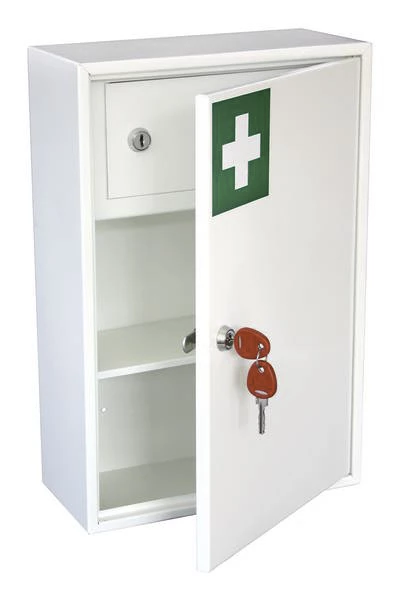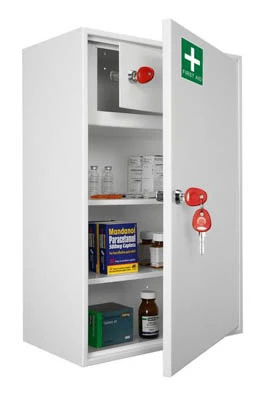Care home drug storage. Managing controlled drugs in care homes requires strict adherence to UK regulations. Moreover, non-compliance can result in serious consequences during CQC inspections. This comprehensive guide covers everything you need to know about controlled drug storage in 2025.
Understanding Your Legal Obligations
The Misuse of Drugs (Safe Custody) Regulations 1973 forms the foundation of controlled drug storage requirements. Additionally, care homes must comply with the Controlled Drugs (Supervision of Management and Use) Regulations 2013. These regulations exist to protect residents whilst preventing drug misuse.
Care home managers carry significant responsibility for maintaining compliance. Furthermore, CQC inspectors specifically examine controlled drug management during assessments. Therefore, understanding your obligations prevents regulatory issues and protects your residents.
Care home drug storage. The Difference Between Care Homes With and Without Nursing
Care homes with nursing face different requirements than those without nursing staff. Specifically, homes with nursing must appoint a controlled drugs accountable officer. This person oversees all aspects of controlled drug management within the facility.
Conversely, care homes without nursing can nominate a responsible person instead. However, this nominated person still requires proper training and authority. They must understand the regulations thoroughly and implement appropriate governance arrangements.
The distinction affects waste disposal procedures significantly. Indeed, care homes with nursing need a T28 waste exemption from the Environment Agency. Meanwhile, homes without nursing return controlled drugs to community pharmacies for destruction.
Care home drug storage. Essential Requirements for Controlled Drug Cupboards

Your controlled drug cupboard must meet specific construction standards. Firstly, the cupboard must be manufactured from metal with strong, secure hinges. Additionally, the door must close flush and feature a robust locking mechanism.
The Misuse of Drugs (Safe Custody) Regulations mandate these construction requirements. Therefore, suppliers should confirm their products meet these standards before purchase. Never assume a standard medicine cupboard provides adequate security for controlled drugs.
Wall or floor fixing represents another critical requirement. Furthermore, the cupboard must be fixed using appropriate bolts to prevent removal. This prevents unauthorised access and satisfies regulatory requirements during inspections.
Access control forms an equally important consideration. Specifically, only designated staff members should hold keys to the controlled drug cupboard. Moreover, you must maintain a record of who holds keys at any given time.
Key Security Protocols
Implementing robust key security protocols protects your controlled drug supplies. Firstly, conduct a risk assessment to determine which staff members require key access. Then, document this decision clearly in your controlled drugs policy.
Store spare keys in a secure location away from the controlled drug cupboard. Additionally, never leave keys unattended or store them in obvious locations. Staff members holding keys must understand their responsibility for maintaining security.
Consider implementing a key signing system for shift handovers. This creates an audit trail and ensures accountability across different shifts. Furthermore, investigate immediately if any keys go missing or become compromised.
Care home drug storage. The Refrigerated Controlled Drug Storage Challenge
Some controlled drugs require refrigeration to maintain their effectiveness. However, a significant problem exists within the current market. Presently, no medicine refrigerators meet the Misuse of Drugs (Safe Custody) Regulations fully.
This creates a practical challenge for care homes managing refrigerated controlled drugs. Consequently, regulatory guidance provides a workaround solution. You can store controlled drugs in a standard locked medicine refrigerator.
Nevertheless, additional security measures become essential in this situation. Specifically, place controlled drugs inside a lockable box within the refrigerator. Then, restrict access to this box according to your controlled drugs policy.
Store other medicines separately from controlled drugs within the same refrigerator. This prevents confusion and maintains proper organisation of your medicine storage. Furthermore, document these arrangements clearly in your standard operating procedures.
Care home drug storage. Temperature Monitoring Requirements
Maintaining appropriate temperatures protects medicine effectiveness and patient safety. Therefore, monitor your medicine refrigerator temperatures regularly throughout each day. Record these temperatures in a dedicated logbook for inspection purposes.
Set temperature alarms to alert staff if the refrigerator temperature drifts outside acceptable ranges. Additionally, establish clear procedures for responding to temperature excursions. This ensures controlled drugs remain safe and effective for resident use.
Calibrate temperature monitoring equipment according to manufacturer recommendations. Moreover, replace equipment before calibration certificates expire. These measures demonstrate your commitment to maintaining medicine quality standards.
Care home drug storage. Medicine Storage Standards Beyond Controlled Drugs
Care homes must provide appropriate storage for all medicines, not just controlled drugs. Indeed, the Health and Safety (First-Aid) Regulations 1981 require adequate first aid provision. This includes accessible storage for emergency supplies and routine medications.
General medicine cupboards should meet British Standard BS 2881:1989 for security. Additionally, these cupboards must be lockable whilst remaining easily accessible to authorised staff. Consider wall-mounted options to maximise available floor space in medicine rooms.
Organise medicines logically to prevent dispensing errors and streamline medicine rounds. Furthermore, separate external preparations from internal medicines to reduce confusion. Label shelves clearly and maintain consistent storage locations for regular medications.
First Aid Cabinet Requirements

First aid cabinets serve different purposes than controlled drug cupboards. Consequently, they require quick access during emergencies whilst maintaining basic security. Wall-mounted cabinets with clear external markings work effectively for this purpose.
The KFAK range provides suitable options for first aid equipment storage. These cabinets feature 1.5mm steel construction with flush-closing doors. Additionally, they include removable shelves for flexible organisation of supplies.
Choose appropriate sizes based on your care home’s resident capacity and risk assessment. Smaller facilities may find the KFAK001 compact model sufficient for basic first aid needs. Conversely, larger care homes benefit from the KFAK003 model’s increased storage capacity.
Place first aid cabinets in easily accessible locations throughout your facility. Moreover, ensure staff members know where these cabinets are located and can access them quickly. Regular checks prevent supplies from expiring or running low during emergencies.
Care home drug storage. Implementing Robust Controlled Drug Policies
Every care home must develop comprehensive controlled drug policies and procedures. These documents guide staff behaviour and ensure consistent compliance with regulations. Furthermore, well-written policies protect your organisation during inspections and investigations.
Your controlled drug policy should cover storage, administration, recording, and disposal procedures. Additionally, include sections on staff training requirements and incident reporting protocols. Review and update these policies annually or when regulations change.
Standard operating procedures provide detailed, step-by-step instructions for specific tasks. For example, create separate SOPs for controlled drug stock checks, administration procedures, and disposal processes. These documents support staff competence and maintain consistency across shifts.
Care home drug storage. Staff Training and Competence
Staff members handling controlled drugs require appropriate knowledge and skills. Therefore, implement comprehensive training programmes for all relevant personnel. This training should cover legal requirements, your policies, and practical procedures.
Assess staff competence regularly through observation and knowledge checks. Additionally, provide refresher training annually to maintain high standards. Document all training activities carefully for inspection purposes.
New staff members must receive controlled drug training during their induction period. Moreover, they should work under supervision until they demonstrate adequate competence. Never assume prior experience equals understanding of your specific procedures.
Care home drug storage. The Controlled Drugs Register: Your Essential Record
Maintaining an accurate controlled drug register represents a legal requirement. This register records every controlled drug transaction within your care home. Furthermore, inspectors scrutinise these registers carefully during CQC assessments.
Record entries must be made promptly and in indelible ink. Additionally, each entry requires specific information including date, resident details, and quantity. Never use correction fluid or erase entries in the controlled drugs register.
Separate registers work best for different categories of controlled drugs. Specifically, use different pages or sections for each drug name and strength. This prevents confusion and simplifies stock reconciliation procedures.
Care home drug storage. Stock Reconciliation Procedures
Conduct regular stock checks to verify your physical stock matches register entries. Most care homes perform these checks weekly, though some choose daily reconciliation. Consequently, regular checks quickly identify discrepancies and prevent stock accumulation.
Two staff members should participate in stock reconciliation procedures. One person counts the physical stock whilst another verifies against register entries. Then, both staff members sign the register to confirm accuracy.
Investigate discrepancies immediately when physical stock doesn’t match register records. Document your investigation thoroughly, including the outcome and any corrective actions taken. Furthermore, inform your controlled drugs accountable officer about significant discrepancies.
Disposal and Destruction Requirements
Safe disposal of controlled drugs protects residents and prevents environmental contamination. However, different rules apply depending on whether drugs are stock or patient-specific. Understanding these distinctions ensures compliance with waste regulations.
Patient-specific controlled drugs in Schedules 2, 3, and 4 (Part I) require denaturing before disposal. Denaturing means rendering the drugs unusable by crushing tablets or opening ampoules. Additionally, this process must occur before handing drugs to waste disposal companies.
Care homes with nursing must obtain a T28 waste exemption from the Environment Agency. This free exemption permits you to denature controlled drugs on site. Conversely, care homes without nursing return controlled drugs to community pharmacies for destruction.
Care home drug storage. The T28 Waste Exemption Process
Applying for a T28 exemption involves registering with the Environment Agency online. The application requires basic information about your care home and waste handling procedures. Furthermore, approval typically arrives within several weeks of submission.
Once granted, your T28 exemption remains valid indefinitely unless circumstances change significantly. However, you must notify the Environment Agency if you cease operating or relocate. Keep a copy of your exemption certificate readily available for inspections.
The exemption specifically covers denaturing controlled drugs before disposal as pharmaceutical waste. Therefore, follow denaturing procedures carefully to maintain compliance. Two staff members should participate, with one denaturing and another witnessing the process.
Care home drug storage. Authorised Witness Requirements
Schedule 2 controlled drug stock requires destruction in the presence of an authorised witness. Authorised witnesses include police constables and General Pharmaceutical Council inspectors. Additionally, NHS England lead controlled drugs accountable officers can appoint authorised witnesses.
Contact your local NHS England CDAO team for a list of authorised witnesses. Plan destruction events in advance to ensure witness availability. Furthermore, allow adequate time for this process rather than rushing through disposal procedures.
Record destruction in your controlled drug register immediately after completion. Include the witness’s name, designation, and signature in your records. These entries provide essential evidence of compliant disposal during inspections.
Choosing Appropriate Storage Solutions

Selecting suitable storage cabinets requires careful consideration of your specific needs. Different areas within your care home require different levels of security. Therefore, assess each location separately before purchasing storage solutions.
For controlled drugs, invest in cabinets specifically designed to meet regulatory requirements. The Secur Store range offers independently tested and certified protection. These units feature EN 14450 S1 certification from VdS, providing high-level security.
Constructed from 3mm steel with three-point locking systems, Secur Store cabinets prevent unauthorised access effectively. Additionally, reinforced steel plates protect against physical attack attempts. VdS Class 1 locks provide key security with two high-security keys included.
Electronic Locking Options
Electronic locking systems offer enhanced access control and audit trail capabilities. These systems record who accesses controlled drugs and when they do so. Consequently, electronic locks support accountability and help identify potential security breaches.
Modern electronic medicine units feature slimline keypads with LED displays. Furthermore, they include emergency override keys for situations when electronic systems fail. Built from 2mm steel with reinforced 5mm doors, these units provide excellent security.
Twin locking bolts add extra protection against forced entry attempts. Additionally, programmable access codes allow you to restrict access to specific staff members. Change codes regularly and immediately after staff departures to maintain security.
Consider electronic locking for high-risk environments or facilities with compliance concerns. However, ensure staff receive adequate training on using electronic systems correctly. Technical failures can disrupt medicine administration if staff lack override procedures.
Budget-Friendly Options for General Storage
Not every medicine storage location requires maximum security features. General medicine cupboards and first aid stations work effectively with more economical options. The KFAK range provides cost-effective solutions for these applications.
The KFAK001 compact model suits small treatment rooms and consulting areas perfectly. Measuring 350mm high by 300mm wide by 120mm deep, it fits easily onto walls. Two removable shelves accommodate various first aid supplies and non-controlled medications.
Mid-sized facilities benefit from the KFAK002 model’s balanced capacity. This unit includes one removable shelf plus a lockable internal compartment. Therefore, you can secure higher-risk items separately whilst maintaining general medicine access.
Large care homes with extensive medicine storage needs appreciate the KFAK003 capabilities. This full-height cabinet provides maximum storage capacity with two shelves and an internal compartment. Consequently, it reduces clutter and improves medicine room organisation significantly.
All KFAK models feature easy-clean gloss white finishes with optional green cross identification. Security cam locks with two keys provide basic access control. Moreover, these affordable units meet general medicine storage requirements effectively.
Room Design and Environmental Considerations
Medicine rooms require appropriate environmental conditions to maintain drug stability. Adequate lighting enables staff to read labels clearly and prevents dispensing errors. Therefore, install bright lighting fixtures including emergency backup lighting systems.
Room temperature affects many medications adversely when outside acceptable ranges. Maintain consistent temperatures between 15°C and 25°C in medicine storage areas. Additionally, monitor humidity levels to prevent moisture damage to packaging and medications.
Ventilation prevents heat accumulation whilst maintaining air quality in medicine rooms. However, avoid placing medicine cupboards in direct sunlight or near heat sources. These conditions accelerate drug degradation and reduce medication effectiveness.
Infection Control in Medicine Storage Areas
Medicine storage areas must meet infection control standards to prevent contamination. Therefore, choose materials and finishes that support easy cleaning and disinfection. Powder-coated steel cabinets with smooth surfaces work well for this purpose.
Anti-bacterial and anti-microbial coatings provide additional protection in clinical environments. These special finishes actively resist bacterial growth on cabinet surfaces. Furthermore, they simplify cleaning procedures and reduce infection transmission risks.
Maintain cleanliness through regular cleaning schedules for medicine storage areas. Wipe surfaces with appropriate disinfectants according to infection control protocols. Additionally, remove spillages immediately to prevent contamination of other medicines.
Segregate clean and dirty procedures within medicine rooms to prevent cross-contamination. For example, designate separate areas for medicine preparation and waste disposal. Clear workflows reduce confusion and support consistent infection control practices.
Incident Reporting and Learning
Despite best efforts, incidents involving controlled drugs occasionally occur. Prompt reporting enables investigation and prevents recurrence through learning. Therefore, establish clear incident reporting procedures and ensure staff understand them thoroughly.
Report all controlled drug incidents to your controlled drugs accountable officer immediately. Additionally, inform the local NHS England lead CDAO about significant incidents. They coordinate responses across local intelligence networks and identify concerning patterns.
Document incidents thoroughly, including circumstances, immediate actions taken, and investigation findings. Furthermore, implement corrective actions to prevent similar incidents occurring again. Share learning throughout your organisation to improve overall controlled drug management.
Common Incident Types
Stock discrepancies represent the most frequent controlled drug incident type. These occur when physical stock doesn’t match register entries after reconciliation. Investigate these immediately to identify causes such as recording errors or security breaches.
Lost or stolen controlled drugs require urgent reporting to police and regulatory authorities. Additionally, review security arrangements and implement enhanced measures to prevent recurrence. Consider involving the Local Intelligence Network in serious cases.
Administration errors occasionally occur despite careful procedures and staff training. Record these incidents carefully and assess whether the error reached the resident. Furthermore, consider whether additional safeguards or training might prevent similar errors.
Spillages and damaged stock sometimes render controlled drugs unsuitable for use. Treat these situations as requiring disposal through appropriate procedures. Moreover, record the loss in your controlled drug register with clear explanations.
CQC Inspection Preparation
CQC inspectors examine controlled drug management as part of their assessment framework. Therefore, maintaining ongoing compliance proves easier than preparing hastily before inspections. Regular self-audits identify issues whilst you have time to address them properly.
Review your controlled drug policies and procedures regularly to ensure they remain current. Additionally, verify staff members understand and follow these procedures consistently. Competence assessments and spot checks support this verification process.
Ensure your controlled drug cupboards and storage facilities meet all regulatory requirements. Check fixing bolts remain secure and locking mechanisms function correctly. Furthermore, verify you hold current documentation for cabinet specifications and certifications.
Documentation Inspectors Review
Inspectors thoroughly examine controlled drug registers during their assessments. Therefore, ensure entries are complete, legible, and made in indelible ink. Regular stock reconciliations demonstrate your commitment to maintaining accurate records.
Staff training records prove competence and support your governance arrangements. Keep these records up-to-date with clear evidence of initial and refresher training. Additionally, document competence assessments and any remedial actions taken.
Incident reports and investigations show how you respond to problems. Maintain these records carefully with clear documentation of outcomes and learning. Furthermore, demonstrate how you’ve shared learning throughout your organisation.
Policy documents should be version-controlled with clear review dates. Ensure staff members can access current policies easily when needed. Additionally, keep superseded versions for reference during incident investigations.
Looking Forward: Smart Storage Solutions
Technology continues advancing medicine storage capabilities through smart cabinet systems. These systems monitor inventory levels automatically and alert staff about expiring medications. Consequently, they reduce waste whilst ensuring medicine availability for residents.
RFID technology enables tracking of individual medicine packages throughout storage and administration. This creates comprehensive audit trails supporting accountability and investigation. Furthermore, automated systems reduce manual recording errors and save staff time.
However, smart storage systems require significant investment and ongoing maintenance. Therefore, evaluate whether these advanced features justify costs for your specific situation. Many care homes achieve excellent compliance using traditional storage with robust procedures.
Consider smart storage when managing large controlled drug stocks or facing persistent compliance challenges. Additionally, these systems suit organisations wanting to demonstrate innovation and commitment to best practice. Balance technological capabilities against practical implementation and staff training requirements.
Building a Culture of Compliance
Successful controlled drug management requires more than policies and procedures alone. Indeed, building a positive culture around compliance creates sustainable improvements. Staff members who understand why regulations exist generally comply more consistently.
Explain the reasons behind controlled drug requirements during training sessions. Discuss real examples of how proper storage protects residents and prevents harm. Additionally, acknowledge the challenges staff face whilst emphasising their important role.
Recognise and celebrate good practice rather than only highlighting problems. Staff members who receive positive feedback feel valued and motivated to maintain standards. Furthermore, this approach builds morale and supports retention in challenging care environments.
Encourage staff to raise concerns about controlled drug management without fear of blame. Indeed, early problem identification prevents escalation into serious incidents. Create approachable leadership that responds constructively to questions and concerns.
Practical Implementation Checklist
- Review and update controlled drug policies and procedures
- Audit physical storage facilities against regulatory requirements
- Verify controlled drug cupboards meet construction standards
- Implement key control and access restriction procedures
- Review controlled drug register and reconciliation procedures
- Assess staff competence in controlled drug handling
- Establish regular self-audit procedures
- Apply for T28 waste exemption if required
- Identify and contact local NHS England lead CDAO
- Install appropriate storage solutions for different risk levels
Support and Resources Available
You don’t face controlled drug management challenges alone. Indeed, numerous support resources exist to help care homes achieve and maintain compliance. Knowing where to find help saves time and prevents costly mistakes.
Your local NHS England lead controlled drugs accountable officer provides invaluable guidance and support. Contact them when you face unusual situations or need clarification about requirements. Additionally, they coordinate local intelligence networks offering peer support opportunities.
The Care Quality Commission publishes helpful guidance documents specifically for care homes. Their mythbuster series addresses common misunderstandings about controlled drug requirements. Furthermore, CQC’s website includes practical tools and templates supporting compliance.
Professional bodies like the Royal Pharmaceutical Society offer extensive resources and training. Their guidance documents reflect current best practice and regulatory expectations. Additionally, consider joining professional networks for ongoing learning and peer support.
Specialist suppliers provide expert advice on selecting appropriate storage solutions. Contact reputable suppliers early in your planning process to benefit from their experience. Furthermore, verify suppliers understand care home-specific requirements before purchasing equipment.
Investment in Quality Storage Solutions
Appropriate storage equipment represents a crucial investment in resident safety and regulatory compliance. However, budget constraints affect many care homes’ purchasing decisions. Therefore, prioritise spending based on risk assessment and regulatory requirements.
Invest most heavily in controlled drug storage meeting mandatory security standards. These cabinets form your primary defence against unauthorised access and diversion. Consequently, choosing certified products like EN 14450 S1 rated cabinets provides peace of mind.
For general medicine storage, balance cost against functionality and longevity. Quality mid-range options like the KFAK series provide excellent value for appropriate applications. Moreover, their durable construction ensures many years of reliable service.
Consider total cost of ownership rather than only initial purchase price. Cheap cabinets requiring frequent replacement ultimately cost more than quality options purchased initially. Additionally, factor in installation costs, especially for heavy-duty secured storage units.
Plan storage purchases strategically as part of broader medicine management improvements. Phased implementation spreads costs whilst delivering progressive compliance improvements. Furthermore, this approach allows learning from early purchases to inform later decisions.
Conclusion: Your Path to Compliance Excellence
Achieving controlled drug storage compliance requires commitment, investment, and ongoing attention. However, the benefits extend far beyond satisfying regulatory requirements alone. Proper storage protects residents, supports staff confidence, and demonstrates your organisation’s professionalism.
Start by thoroughly understanding your legal obligations and current compliance status. Then, develop a realistic action plan addressing gaps systematically over time. Additionally, involve staff members in improvement efforts to build ownership and sustainability.
Remember that compliance represents an ongoing journey rather than a destination. Regulations evolve, circumstances change, and continuous improvement opportunities always exist. Therefore, maintain vigilance whilst celebrating progress along the way.
Seek support from available resources when you face challenges or uncertainty. Professional guidance prevents costly mistakes and accelerates your compliance journey. Furthermore, learning from others’ experiences saves time and reduces stress.
Your residents deserve the highest standards of controlled drug management and security. By implementing robust storage solutions and procedures, you fulfill this responsibility effectively. Moreover, you create a safer environment where staff can focus on delivering excellent care.
For expert guidance on selecting appropriate controlled drug storage solutions, contact Total Locker Service today. We provide compliant cabinets meeting all UK regulatory requirements for care homes.





